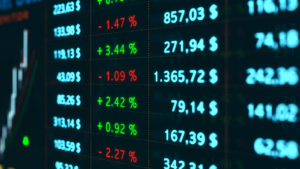Are P/E ratios a misleading indicator?
As it stands, the ASX’s November 2020 performance could be the best in over 50 years. It seems impossible when you consider the state of the “real” economy, which is effectively on government life-support following enforced economic lockdowns. Such has been the strength of the recovery that estimates suggest the S&P/ASX 200 now trades on a trailing (FY20 earnings) price-to-earnings (P/E) ratio of 18 times earnings, or close to 20% higher than the ten-year average.
The chorus of commentators calling the market overvalued has began again, but surely after a decade of ‘inflated’ P/E ratios and little in the way of a correction (outside the pandemic), it’s time to look a little deeper at our investment approach?
It has become evident in the last few years that blanket statements about market or index valuations are incredibly ineffective. The nature of market-cap-weighted indices means that ‘average’ figures actually reflect the largest components, not the market as a whole. How else could you explain why the sharemarket is over-valued, yet a large majority of companies remain well below their levels of just 12 months ago? The issue is even more obvious in the US, where the S&P 500 has a trailing P/E ratio of about 25 times.
Yet P/E ratios alone could best be described as a misleading indicator. There are a number of reasons why this is the case, ranging from their historical and therefore ‘transitory’ nature, the weighting of the components that form these ‘averages’ and most importantly the individual inputs in the Earnings denominator.
The transitory nature of P/E ratios is best reflected in those of the banking sector, where valuations on the major banks range from 19 times to 21 times historical earnings. While prices have recovered strongly, short-term earnings have been impacted by huge loan impairments which may or may not come to fruition. Consider for instance that most bank economists were predicting a worst-case scenario of double-digit unemployment and residential property price falls, but we have actually seen neither. What if the impairments have been too high in light of Australia’s success in combating the virus?
Similarly, speaking with David Moberley of Paradice Investment Management, it is clear that this sort of blanket assessment is making broad statements of little use. Moberley highlights the important impact that accounting decisions can have on the market P/E as a whole, with world leader CSL Limited (ASX: CSL) a case in point. CSL trades on a trailingP/E ratio of 49 times, one of the most expensive in Australia, but Moberley suggests this figure is inflated by CSL’s huge research and development (R&D) pipeline.
According to Moberley, CSL spends around $1 billion on R&D, which is being expensed through the company’s Profit and Loss statement (the Consolidated Statement of Comprehensive Income, CSL being a US$-denominated reporter) in year one. The result is a lower level of earnings than you would typically expect, and a higher relative P/E ratio. He thinks “looking at the headline P/E for a company is overly simplistic.” Further, he says that “if you’re looking through a company’s profit and loss statement and their earnings are suppressed by the fact that they are investing a billion dollars to support future growth, then I think just valuing that part of the business at the headline multiple is the right way to do it”. On the other side, he highlights that simply applying the headline P/E ratio to the company’s R&D investment would result in similarly deficient results.
Now, this is only one company, but a company that makes up close to 8% of the S&P/ASX 200 index and whose daily movements can ultimately determine its returns. Extrapolate this across the entire market and it is clear that P/E ratios alone are becoming less relevant.











